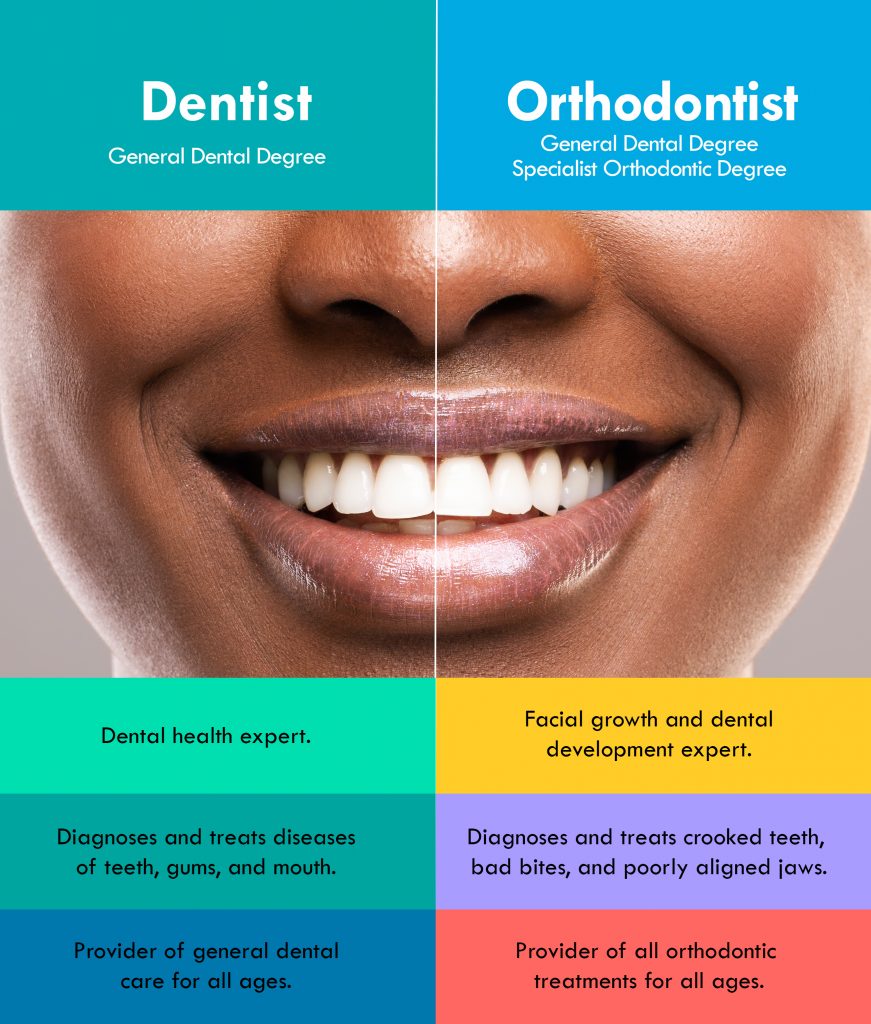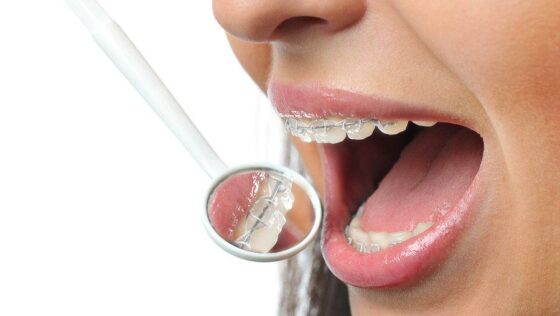Unknown Facts About All Star Family Orthodontics
Unknown Facts About All Star Family Orthodontics
Blog Article
Top Guidelines Of All Star Family Orthodontics
Table of ContentsAn Unbiased View of All Star Family OrthodonticsFacts About All Star Family Orthodontics UncoveredSome Ideas on All Star Family Orthodontics You Need To KnowThe Definitive Guide for All Star Family OrthodonticsThe 8-Second Trick For All Star Family Orthodontics

In enhancement, we provide flexible treatment schedules, versatile repayment choices and an enjoyable, enjoyable experience.
An orthodontist is a dentist educated to diagnose, prevent, and treat teeth and jaw irregularities. Orthodontists function with people of all ages, from youngsters to adults.
Malocclusion, or misaligned teeth, can result in oral problems, consisting of dental cavity, gum illness, and tough or excruciating eating. Not everyone is born with straight teeth. If you have a negative bite or large areas in between your teeth, you might want to seek advice from a dental professional specializing in orthodontic care.
9 Simple Techniques For All Star Family Orthodontics
(Picture Debt: DigitalVision/Getty Images) Orthodontists use taken care of and removable oral devices, like dental braces, retainers, and bands, to change the position of teeth in your mouth. Orthodontic therapy is for dental problems, including: Crooked teethBite issues, like an overbite or an underbiteCrowded teeth or teeth that are also far apartJaw misalignmentThe objective of orthodontic therapy is to enhance your bite.
While you could think of orthodontists as mostly for children or young adults that need dental braces, they can deal with oral problems at any type of age. Orthodontists go to university, dental school, and orthodontic school.
, but not all dental professionals are orthodontists. They focus on 2 areas: How to correctly and securely move teeth Exactly how to properly guide development in the teeth, jaw, and faceOnce an orthodontist has actually completed training, they have the alternative to become board certified.
The Ultimate Guide To All Star Family Orthodontics
Imbalance, or malocclusion, is the most typical factor people see an orthodontist. Malocclusion is normally treated with: Your orthodontist connects steel, ceramic, or plastic square bonds to your teeth.
Some individuals need a headgear to aid move teeth into line with stress from outside the mouth. A retainer is a customized device that keeps your teeth in area.

You may need to see an orthodontist if you have: Crowding or not enough area for all of your teethOverbite, when your upper teeth come your base teethUnderbite, when your bottom teeth are too far forwardSpacing or concerns with gapsCrossbite, which is when your top teeth fit behind your bottom teeth when your mouth is closedOpen bite or a vertical void between your front bottom and top teethMisplaced midline, when the facility of your bottom and upper teeth don't align Correcting a dental malocclusion can: Make attacking, eating, and talking easierImprove the balance of our face and your general appearanceEase pain from temporomandibular joint disordersSeparate your teeth and make them much easier to clean, aiding protect against dental cavity or dental caries It's often a home dental professional who initially notices misaligned teeth throughout a regular examination.
All Star Family Orthodontics Things To Know Before You Get This
During your initial orthodontic examination, you'll likely have: An oral examPhotos taken of your face and smileDental X-raysPanoramic (360 degree) X-rays of your face and headImpressions to develop mold and mildews of your teethThese examinations will certainly assist your orthodontist understand exactly how to wage your therapy. An orthodontist is a dental practitioner who's had training to treat your teeth and jaw.
Orthodontists may do surgical procedure, exams,X-rays, - invisalignand even more to assist you attain an extra comfy, much healthier smile. An orthodontist is concentrated on your bite, so something like a cracked tooth would certainly be dealt with by a dental practitioner. Orthodontists are dental experts yet not all dentists are orthodontists. Orthodontists are concentrated on your bite, or the means your teeth fit together, and the straightness of your teeth.

This initial examination entails an aesthetic exam of your teeth and bite, X-rays, and potentially even 3D scans. By carefully examining these aspects, the orthodontist can identify any kind of imbalances, crowding, spacing concerns, or jaw disparities. When a clear picture is developed, the orthodontist will certainly talk about individualized treatment choices. This discussion will cover the sort of braces or aligners advised (traditional steel dental braces, clear aligners like Invisalign, etc), the estimated therapy period, and any type of prospective challenges or adverse effects.
The Facts About All Star Family Orthodontics Revealed
While dental braces are one of the most commonly recognized orthodontic therapy, orthodontists have a varied toolkit at their disposal. The certain technique selected depends on the intensity of the situation, the patient's age, and private choices. These tried-and-true dental braces utilize a system of braces bound to the teeth and attached by wires.
Clear aligners, like Invisalign, are a prominent choice for patients seeking a much more very discreet therapy option. These removable trays are tailor-made to considerably shift the teeth's setting. Headwear might be used along with dental braces or aligners to use additional targeted forces, especially for correcting jaw inconsistencies. In cases of narrow jaws, palatal expanders can be made use of to create area for proper tooth alignment.
Report this page